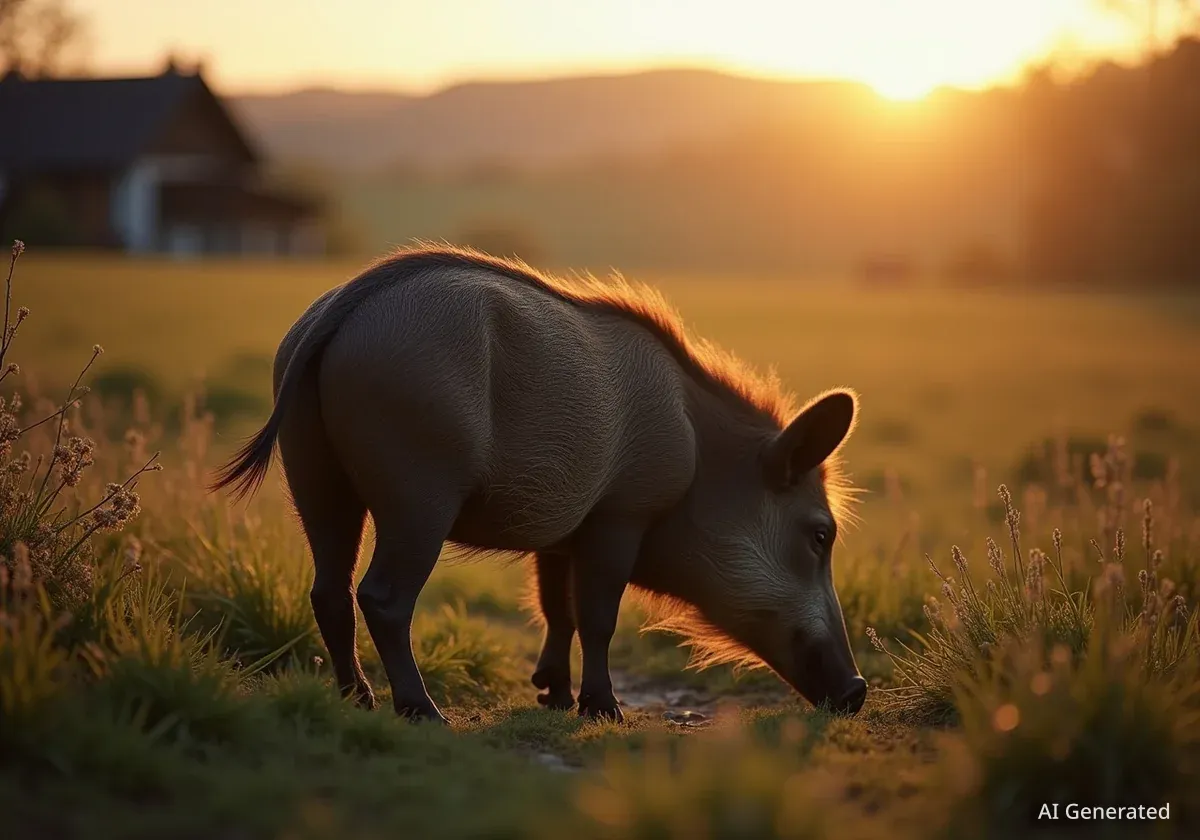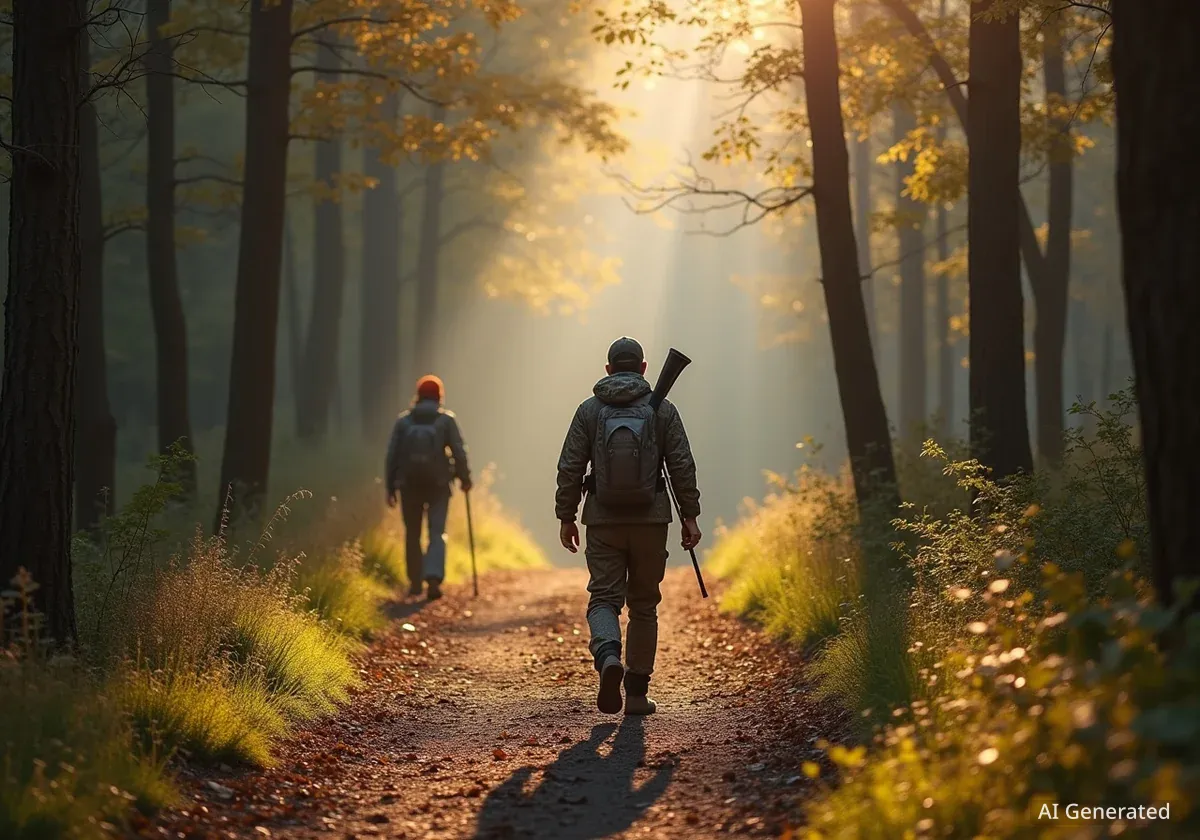Conflicts between humans and wild animals remain a significant challenge in Switzerland, especially within Canton Bern. These interactions often lead to property damage and strong emotional reactions. Peter Juesy, the former Bernese hunting inspector, highlights the ongoing difficulties and potential solutions for coexistence.
Key Takeaways
- Wild boars cause the most material damage in Canton Bern.
- Human-wildlife interactions create strong emotional responses and conflicts.
- Conservation efforts have helped various raptor species recover.
- Sustainable management and dialogue are crucial for coexistence.
Early Conflicts with Lynx in Bern
In February 2000, Peter Juesy, then the hunting inspector for Canton Bern, received an anonymous package. It contained four lynx paws. This event underscored the deep emotional tension surrounding human-wildlife conflicts.
Lynx were reintroduced to Switzerland in the 1970s after being eradicated. By 1990, their population grew quickly in Canton Bern, particularly in the western Bernese Oberland. This increase led to more attacks on livestock.
"That was in February 2000," Juesy recalls. "Very unpleasant." He described it as a typical example of a neighborhood conflict between people and wild animals.
Lynx Poaching
Between 1999 and 2002, approximately 15 lynx were illegally killed in Canton Bern. This number does not include unreported cases. Despite legal action by the hunting inspectorate, no perpetrators were ever caught.
Canton Bern implemented measures to reduce tensions. In 2000, it collaborated with 15 other cantons to develop the first Swiss Lynx Concept. This plan included guidelines for legally culling lynx that caused damage. Juesy noted that the canton legally culled five lynx that year, which helped calm the situation regarding the species.
The Polarizing Presence of Wolves
Despite efforts to manage lynx populations, the emotional intensity surrounding large predators remains high. The wolf, in particular, generates strong opinions. Its population in Switzerland has grown significantly over the last decade.
"The topic of wolves in nature polarizes opinions," Juesy confirms. "Supporters often argue that wolves play an important role in the ecosystem by regulating prey populations, thus maintaining natural balance."
Wolf Population Growth
The wolf population in Switzerland has seen a substantial increase over the past 10 years. This growth brings both ecological benefits and new challenges for human communities.
Opponents of wolf presence often express concerns about the safety of grazing animals. Farmers view wolves as a threat to their herds, which can lead to economic losses. The impact on hunting practices also raises critical questions, as wolves can alter wild animal behavior, making hunting more difficult.
Seeking Solutions for Coexistence
Juesy believes the solution lies in "sustainable, preventive regulation." Switzerland has implemented such a system over the last three years, based on federal hunting regulations. This approach aims to balance wildlife protection with human interests.
"The protection of wolves, as well as the interests of farmers and hunters, must be considered," Juesy emphasizes. "Dialogue and cooperation between different interest groups are crucial for promoting sustainable coexistence."
Lucyan David Mech, a US-American wildlife ecologist, has studied wild wolf behavior extensively. He states that there is no simple formula for managing large carnivores. Mech suggests that those who truly appreciate wolves should see them as fascinating parts of ecosystems, not untouchable icons.
"We must manage these species, with everything that entails. Zoning, hunting interventions, and management instead of bans on thinking," Mech adds. "Then these animals will have a long-term future."
Cultural Perceptions of Wildlife
Peter Juesy attributes some of the strong emotions surrounding the "evil wolf" to cultural and historical factors. For centuries, wolves have been portrayed in stories, myths, and religious texts as symbols of danger and evil. These narratives shape public perception.
Demonized Birds of Prey
Historically, many raptors in Switzerland faced similar demonization. The bearded vulture, which eats animal bones, was falsely called the "lamb vulture" and hunted to extinction. By the early 20th century, all raptor species in Switzerland were severely endangered or gone due to persecution, habitat loss, and pollution.
However, recent decades have seen successful conservation efforts. These include new laws and bird protection initiatives. Juesy explains that protecting habitats and banning raptor persecution have helped stabilize their populations.
Improved Conditions for Birds of Prey
The return to natural landscapes, a decrease in pesticide use, and the creation of nature reserves have positively impacted food supply and breeding conditions for raptors. Switzerland now has the highest density of red kites globally, according to Juesy.
Barn owls and little owls have also benefited from targeted protection. However, not all returning species are welcome. The griffon vulture, for example, remains a controversial topic.
Wild Boars Cause Most Damage
Interestingly, wolves are not responsible for the most material damage in Canton Bern. Juesy states that wild boars cause the greatest losses, followed by red deer.
Wild boars primarily damage agricultural crops in Seeland and the Bernese Jura. In 2018, this cost the canton 132,000 Swiss Francs. Increasing red deer populations lead to more damage in protective forests and agriculture. In 2013, the canton paid 96,000 Swiss Francs in compensation for deer-related damage.
Many wild animal species in Switzerland can lead to conflicts with humans. These include field mice, shrews, foxes, badgers, pine martens, rooks, carrion crows, fish-eating birds like grey herons, goosanders, cormorants, red deer, wild boars, and beavers.
"This list is not exhaustive," notes Peter Juesy, who co-authored the book "Hunting and Wildlife in Canton Bern." He adds, "Where wild animals use and shape human-managed landscapes, conflicts are inevitable."
The book identifies four main areas of conflict:
- Settlement Areas: Species like foxes, pine martens, badgers, rooks, and feral pigeons cause property damage, noise, pollution, garden damage, and can spread diseases. Solutions involve information and prevention.
- Agriculture: Wild boars, badgers, marmots, rooks, carrion crows, lynx, and wolves cause feeding damage, crop damage, attacks on livestock, and burrowing activities. Prevention, compensation, and regulation are key solutions.
- Forests: Roe deer and red deer cause feeding damage and damage related to social behavior. Solutions include prevention, forest management, and wildlife regulation.
- Water Bodies: Beavers, goosanders, and cormorants cause feeding damage and burrowing activities. Prevention, compensation, and intervention are common approaches.
Juesy explains that human interests differ in each of these habitats. This leads to varying conflict potentials with wildlife. Therefore, different solutions are necessary.
Diverse Solutions for Complex Challenges
The strategies and measures to prevent or resolve these conflicts are diverse. "One of the most important tools is hunting legislation," Juesy says. This legislation provides possible actions or interventions to protect both wildlife and human interests.
Can humans and wild animals coexist in the long term? "It must," Juesy stresses. "We share the same living spaces." He acknowledges that the challenges are substantial and require significant effort to ensure harmonious coexistence and preserve biodiversity.
"Adapting agriculture and implementing suitable management strategies will be crucial to minimize conflicts with wild animals in the future," Peter Juesy concludes. "A better understanding of wildlife needs and behaviors can help reduce conflicts and promote more harmonious coexistence."




